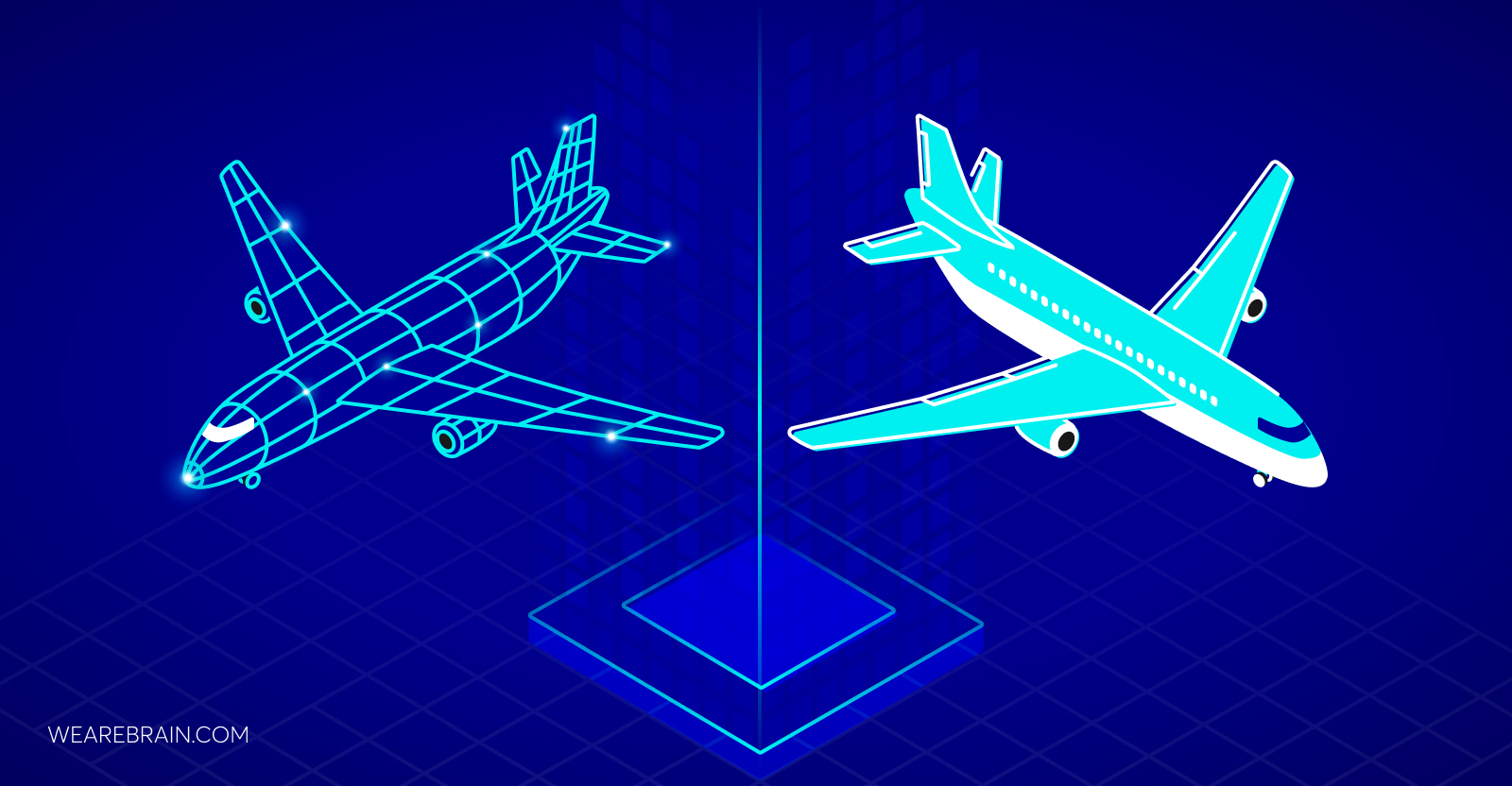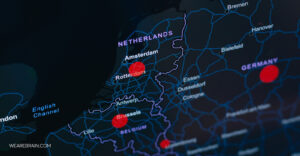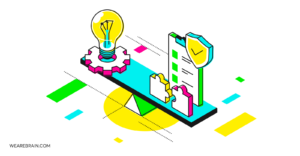Digital twins – a beginner’s guide

Throughout history, technological advancements have relied on hand-drafted conceptual designs, iterations, and prototypes to know if they’re going to work before any manufacturing begins. Even then, success hinges largely on trial and error through real-world applications.
Before Orville Wright piloted all 12 seconds of the world’s first successfully-controlled powered flight in 1903, he and his brother Wilbur drafted multiple engineering concepts until settling on the Wright Flyer I prototype. If he chose to man any test flight from a previous iteration, it might not have turned out so well for Orville.
But in today’s digitally powered world, we no longer need to wait until the rollout of a product to understand how it will perform – or put our lives on the line like brave Orville. With digital twins, we can virtually prototype and make accurate predictions to reveal how products and systems will function before any tangible production kicks off.
What is a digital twin?
A digital twin is a virtual representation or digital replica of a physical asset, product, system, or service that looks, behaves, and functions identically to its real-world counterpart – only virtually. Powered by the Internet-of-Things (IoT), Artificial Intelligence, and software analytics, it uses real-world data to generate simulations that predict the performance of a product or process.
A concisely tangible version of product lifecycle management (PLM), digital twins are used for purposes such as testing, simulation, integration, monitoring, and maintenance throughout an asset’s lifecycle – from conception to disposal.
Digital twins allow cross-functional teams to immersively collaborate in designing, building, testing, deploying, and operating assets and systems. Through simulations, analyses, and visualisations, they provide clarity on an asset’s past, present, and future to help inform decision-making processes.
How do digital twins work?
The purpose of a digital twin is to connect a real-world asset with real-world data to gain deep insights and visualise it within its specific contextual ecosystem. The data is used to replicate processes to generate predictions for outcomes in performance and possible problems that its physical twin might experience.
For example, a car engine will be fitted with sensors in key areas vital for its functionality. The sensors generate data indicating various aspects of performance (such as energy output, combustion rate, etc.) which is sent to a processing system and applied to the digital twin.
From the received data, the digital twin is able to gain insights into performance and run various simulations to predict outcomes and generate possible improvements. These insights can be applied to the physical engine.
Types of digital twins
Digital twins are often divided into 3 different subtypes Digital Twin Prototype (DTP), Digital Twin Instance (DTI), and Digital Twin Aggregate (DTA). Each subtype is used depending on its use case.
Digital Twin Prototype
A DTP is the prototype of a physical asset containing all relevant information of the physical attributes – properties, designs, parameters, etc. Think of it as a master digital copy of the original physical asset.
Digital Twin Instance (DTI)
A DTI is the digital twin of a physical asset that houses the data captured from the sensors when the physical asset is in use. It shows the asset’s past, present, and predicted state that improves over its lifecycle from continuous operational data.
Digital Twin Aggregate (DTA)
The DTA is the aggregate data and information of multiple DTIs used for learning, interrogation, and prognostics.
Additionally, the Digital Twin Environment (DTE) is a collection of DTPs, DTIs, and DTAs used for predictive and interrogative operations.
Digital twin applications
Digital twin technology is used across a wide range of industries for manufacturing, maintenance and failure prevention, as well as lifecycle monitoring.
Not every product requires the complexity of sensor data flow, so digital twins are primarily used for large and complex projects such as buildings and bridges, jet turbines and aeroplanes, wind turbines and pipelines, etc.
For example, large buildings and offshore drilling platforms use digital twins to improve construction and engineering designs, as well as the software systems that operate the structures.
Digital twins are also helping to streamline manufacturing processes throughout entire product lifecycles, from ideation through to the finished product.
The automotive industry relies heavily on digital twin technology to link various co-functioning systems. Digital twins are vital in the design and prototype stage and help increase performance and production efficiency from the gathered data.
The immersive 3D and 4D simulations and visualisations of digital twins using spacial data help urban planners to design smart cities. Planning decisions are guided by virtual models that can predict potential issues and offer solutions when designing modern cities.
Even the healthcare sector is benefiting from this innovative technology. Doctors are able to receive a patient’s real-time health information from sensor-generated data from wearables to monitor and analyse health indicators to generate insights.
The future of digital twins
The future is certainly bright for digital twins as the technologies that power them – AI, ML, and IoT – improve their capabilities over time as more data is processed. This means digital twins are always learning to find new ways to generate insights to improve products and systems.
As we soon approach the age of Web3, Industry 4.0, and the metaverse, products and systems that are powered by interconnected functionalities and processes will be pervasive. It could be argued that the virtual worlds we’re creating, such as the metaverse, are simply digital twins of our physical reality. You can’t get more pervasive than that.
Mario Grunitz
Working Machines
An executive’s guide to AI and Intelligent Automation. Working Machines takes a look at how the renewed vigour for the development of Artificial Intelligence and Intelligent Automation technology has begun to change how businesses operate.







